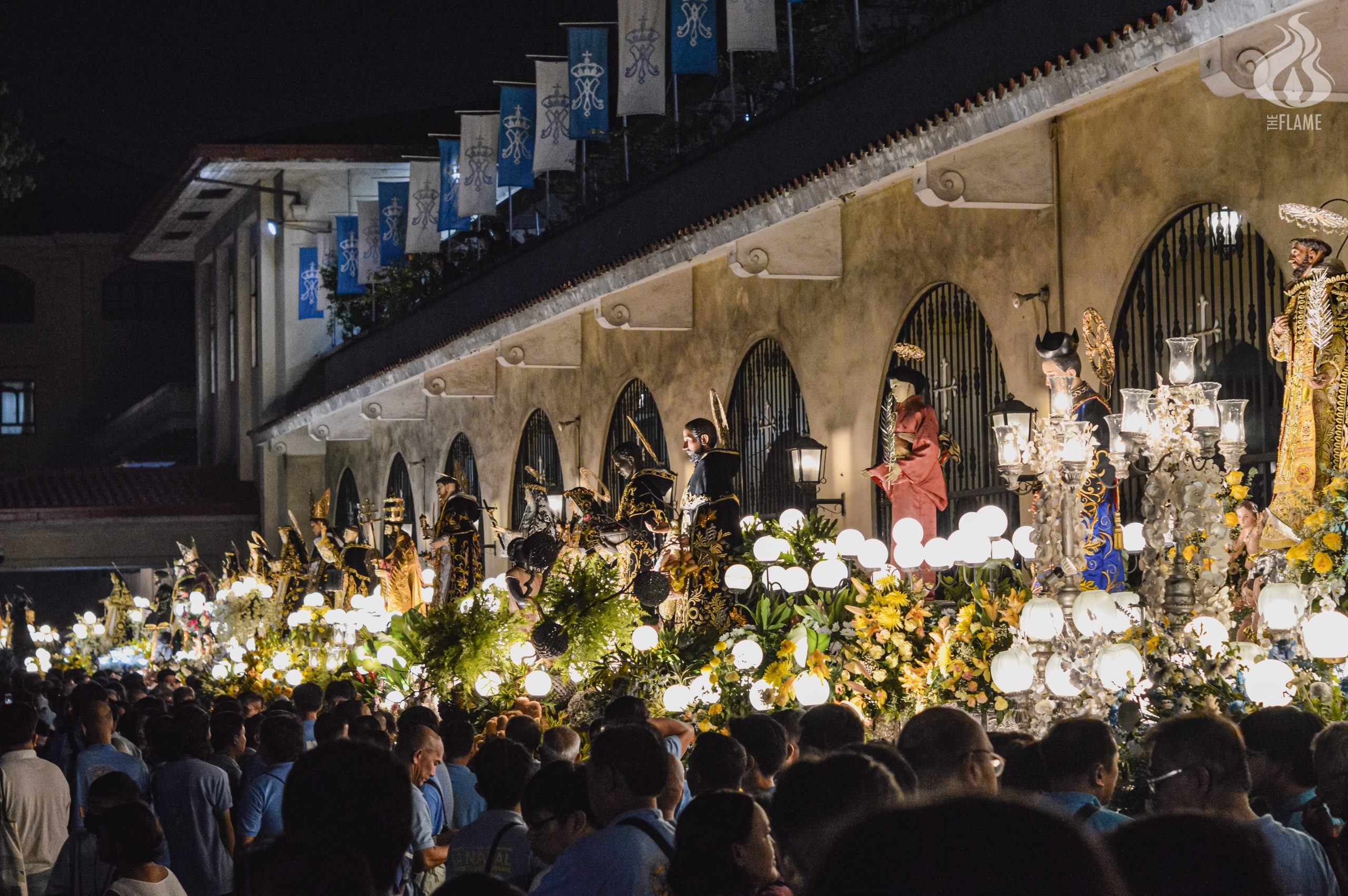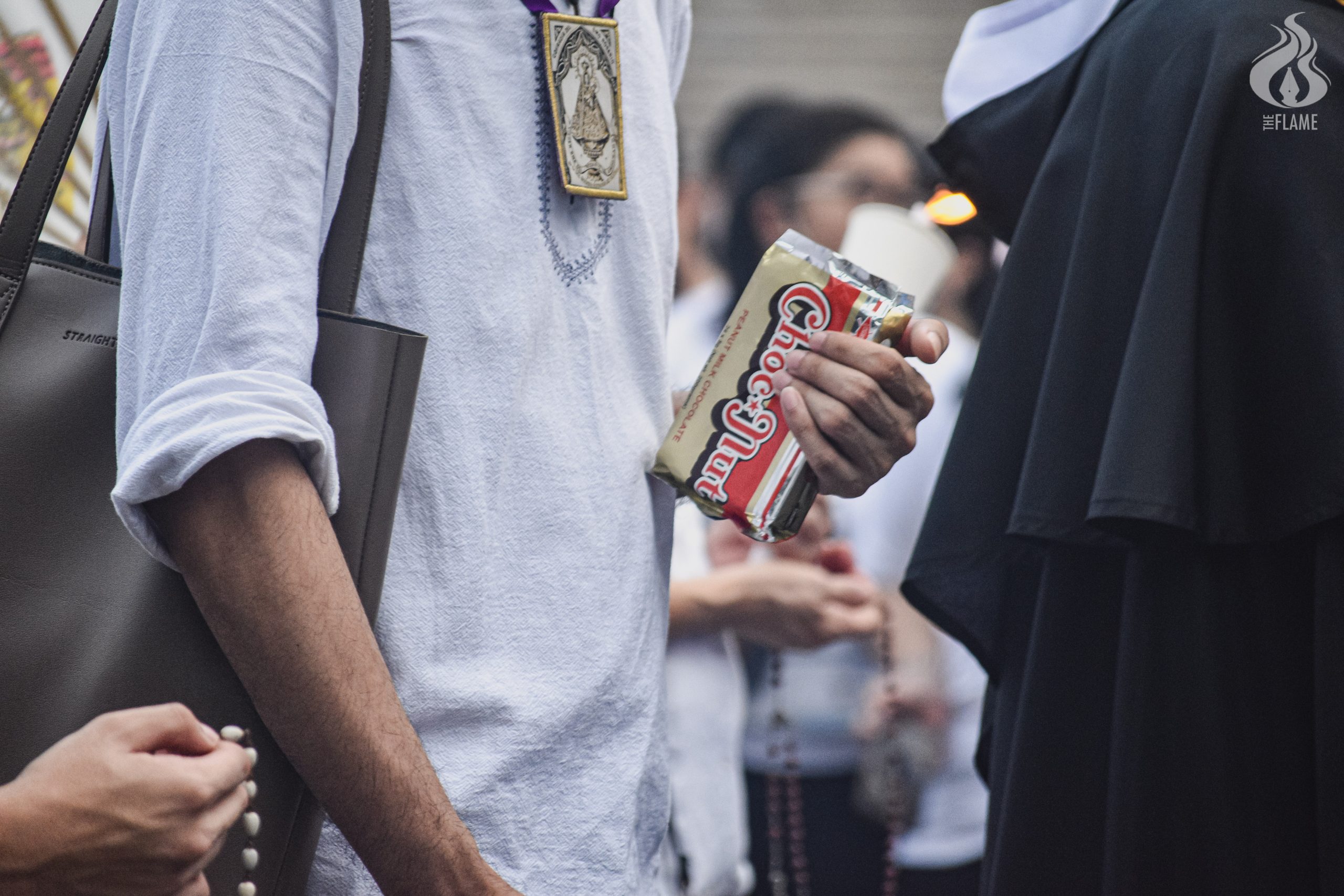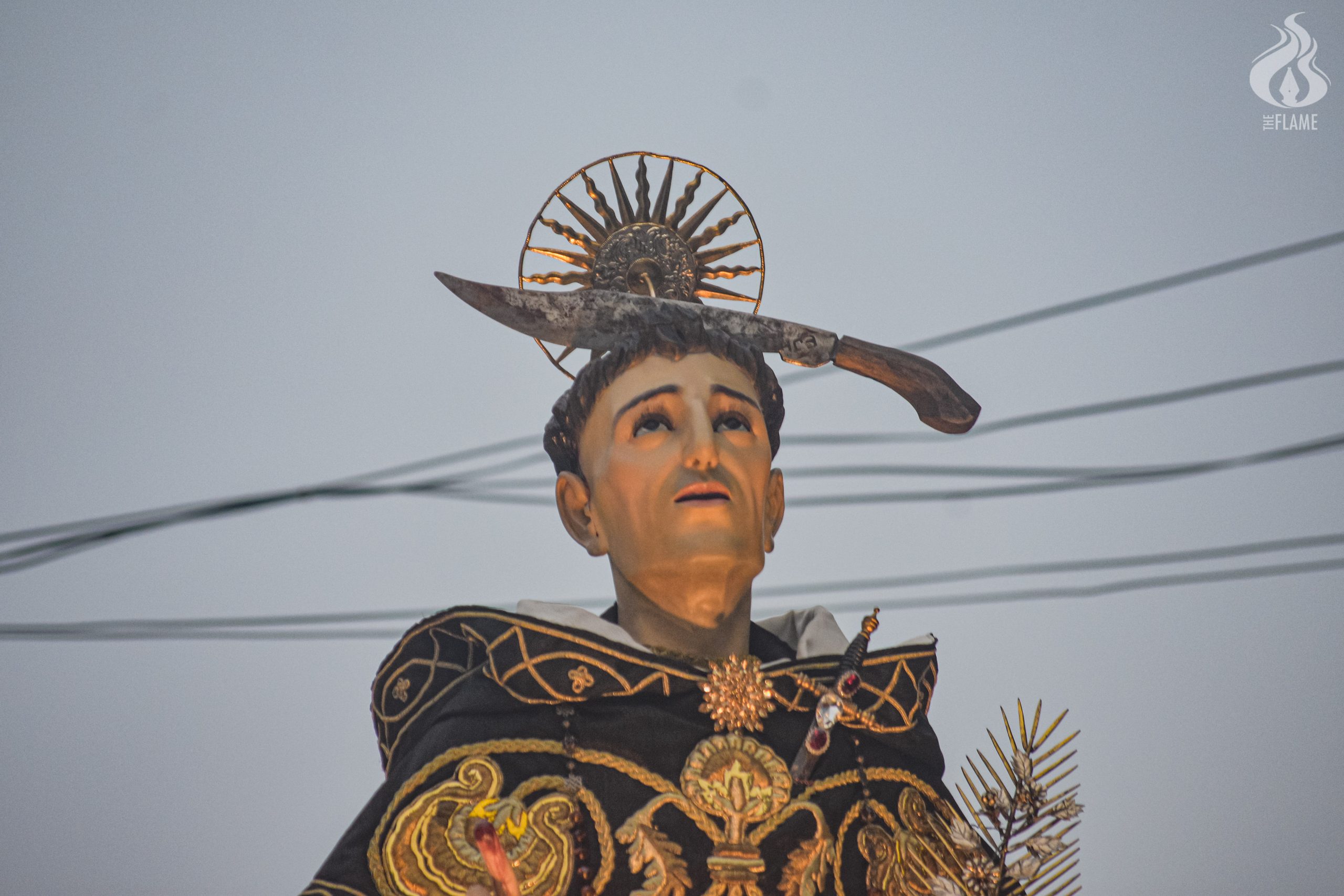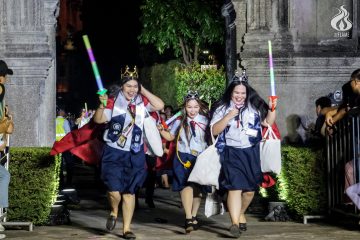IN 1646, a naval captain of Filipino and Spanish troops on board two old trade galleons made a vow to the image of Our Lady of the Most Holy Rosary.

If they defeat the numerically superior and fully armed Dutch forces sent to invade Manila, they would walk barefoot to her shrine in Santo Domingo Church in Intramuros.
After five battles over the course of seven months, the rosary-praying Filipino-Spanish naval forces emerged victorious against the Protestant Dutch invaders, a victory they attributed to the intercession of the blessed mother.
The victorious soldiers fulfilled their promise to the Virgin Mary and walked barefoot to the Dominican church.
More than 300 years since the well-documented act of thanksgiving, devotees are still passionate about expressing their gratitude to the Nuestra Señora del Santisimo Rosario La Naval de Manila.
Some things have changed. The old Intramuros church is no more and the shrine of the historic Marian image is now in Quezon City; most devotees are going to the worship place with their footwear on; there are no more Protestant invaders to worry about although Christians are being challenged by new forces like secularism and relativism.
However, the intensity of the devotion to the La Naval has not waned because she is seen as a symbol of hope and strength, a companion of those who are battered by waves of uncertainties. Such a faith was displayed by thousands who joined the grand La Naval procession last Oct. 8.
Devotees prayed the rosary, chanted the ‘Salve Regina’ and asked for God’s blessings as they accompanied the image of the La Naval during the three-hour event.
Twenty-six images of saints joined the queen’s entourage, reminding the faithful that everyone is called to holiness. They include the following:
St. Lorenzo Ruiz

Leading the entourage was the image of the first Filipino saint St. Lorenzo Ruiz, also the patron saint of migrant workers. The statue was wearing a Barong Tagalog and was holding a palm leaf, a symbol of martyrdom.
Percy Tan, a devotee from Caloocan City, said she looks up to the saint’s strong expression of faith — a trait she wants to deeply emulate.
“As a catechist, we also teach. We teach about (San Lorenzo Ruiz) and his faith; even if he had a thousand lives, he would still sacrifice them to testify to his enduring faith,” she said.
Tan also prays the rosary and goes to church every day as part of her devotion.
St. Thomas Aquinas

St. Thomas Aquinas was described by Pope Benedict XVI as the “Angelic Doctor” due to his virtues, sublimity in thought and the purity of his life. The patron of UST has been a role model not just for Thomasians, but also for the learners who were touched by his works and philosophical teachings.
Curt Aldrich De Castro, an accountancy student and devotee of the saint, has been attending the grand La Naval processions since 2012. He said his determination to return every year stems from the continuous graces he receives throughout his lifetime.
“Most of the time, I need strength in studying because I struggle academically so I really need guidance every time I study so I can retain the knowledge I learn,” de Castro said.
“It’s not just the academics. The beauty of the philosophy from St. Thomas Aquinas has helped me to form or to think of ways on how I can improve my life. Through that philosophy, I’m trying to be a better person.”
St. Catherine of Siena
A catalyst of change, an influential religious and political activist, and one of the patron saints of Italy, St. Catherine of Siena made a mark in the Dominican Order as she persuaded the pope, who was then in Avignon, to return to Rome, restoring peace in Italy.
Catherine wrote letters and prayers that embodied the virtues of self-will, discretion, and connectedness to God.
Carlo Oliver Olayta, a La Naval devotee, dedicates his prayers to St. Catherine of Siena. Olayta’s answered prayers of financial and career guidance define his nearly two-decade devotion and attendance to the feast.
For him, the anecdotes of St. Catherine remain relevant to people’s lives because they are empowering.
“We all are not perfect, right? St. Catherine of Siena has this anecdote — she may look nice (on the outside), but she also has this attitude that she knows where to place. Just like that, we respect our [own] emotions, but we must know our place. If you have to be critical, you [should] be critical in the sense that it is not disrespectful; our criticism must always be constructive,” said Olayta.
St. Vicente Liem de la Paz

St. Vicente Liem de la Paz was a Vietnamese priest, martyr and a notable alumni of the University of Santo Tomas and Colegio de San Juan de Letran. He displayed a strong commitment to his faith because the members of his family were devout Catholics.
He received his elementary and secondary education at Letran, where he also attained the degree of lector of humanities. He went to UST for his collegiate career and stepped into the Dominican Order along with his colleagues from Tonkin, Vietnam.
Vicente faced martyrdom alongside other Tonkinese priests who were persecuted by the Vietnam government. In June 1988, he was canonized by Pope John Paul II.
He is depicted in art as wearing the 1800s Letran uniform and holding a book.
Among Letran students, there is a practice of offering Chocnut candies to his image, especially during exams.
St. Magdalene of Nagasaki
A native of the Land of the Rising Sun, St. Magdalene of Nagasaki is a well-known Asian martyr.
During her time, persecutions against Catholic missionaries and converts pervaded throughout Japan. Having been born into a family of devout Christians, she was left orphaned in her adolescence.
Despite the restrictions against Catholicism in Japan, Magdalene practiced her faith by entering as a tertiary in the Order of Augustinian Recollects. In the following years, her superiors from the order were killed.
Eventually, Magdalene professed her faith to Japanese authorities, who held her captive and tortured her. During her imprisonment, officials tried to persuade her from abandoning her religion by promising a better life filled with riches. However, her firm conviction prevailed, and she was sentenced to death. Clothed in her Augustinian Recollect attire, she was hanged upside down for 13 days until authorities beat her unconscious.
Before her death, Magdalena was mentored by Dominican priest Fr. Giordano de San Esteban and thought of becoming a Dominican tertiary.
She is depicted wearing a traditional kimono and sandals, signifying her Japanese heritage and a tied hair bun topped by a veil symbolizing her nobility as a virgin martyr.
St. Margarita de Castello
Margarita was born blind and a hunchback, forcing her parents to hide her from the public. Eventually, her parents abandoned her after their “failed” pilgrimage that was supposed to cure her.
She learned to beg from homeless people while praying and performing charitable acts — from comforting the prisoners, healing the sick and guiding the lost. Her warmth and generosity spread to more people of Castello.
The saint also performed miracles for the despondent and had the gift of prophecy.
St. Margaret serves as an inspiration to her devotees, especially those who are ridiculed and are facing trials. She is also the patroness of Pro-Life movement.
The Blessed Margaret of Castello Movement in the Philippines was formed in Sto. Domingo Church to promote devotion to her. Her image can be found at the Santisimo Rosario Parish church.
St. Catherine de Ricci
She was known for her distinct religious devotion to the sufferings of Jesus, her salient mystical experiences and her commitment to the Dominican Order. St. Catherine de Ricci manifested her love of prayer in the earliest days of her eventful life. After entering the convent of the Dominican nuns in Prato, Tuscany, she was named the Mistress of Novices, was subsequently promoted to sub prioress, and finally got the title prioress.
Because of her desire to be closer to God, she had a reputation of being strict to herself. Her profound mystical experiences have become the hallmark of her legacy as a saint.
The saint experienced ecstasies that depicted the passion of Christ. Her experiences of these ecstasies lasted for twelve years.
A byproduct of one of her ecstasies was the Canticle of the Passion of Our Lord, a hymn that depicts the sufferings of Jesus. The hymn is often used during Good Friday to reflect on how Jesus’ crucifixion was a way to redeem humanity.
St. Peter the Martyr

His image is striking because of the knife in his heart and a cleaver embedded in his skull, instruments of his martyrdom that also reflected his determination to defend the faith
After being attacked by heretics, he spelled out Credo in Deum or “I believe in God” using his blood.
As the first martyr of the Dominican order, he inspired people to remain steadfast in their faith, even if it means experiencing a thousand cuts. One of his attackers underwent conversion and became part of the Dominican order.
St. Francisco de Capillas
All the way from Bulacan, the carroza of Dominican martyr San Franciso de Capillas was brought to Quezon City for the feast of La Naval.
“In our case, we have our own carrozas. We bring our own carrozas from Bulacan, (then) we tow it here. Days before (the procession), the lights and generators need to be checked. And then, the flowers had to be arranged from yesterday afternoon ‘till evening,” Francis Jason Diaz Perez III, a kamarera or sponsor of the image, said.
According to Perez, his family started being a kamarera to the saint a year after his canonization by Pope John Paul II.
“We started in 2001… Our family’s chapel priest at that time was in Rome because of Pasadena, the headquarters of the Dominican Order. When the saint was canonized, he asked us, ‘Would you want to be a kamarera of the recently canonized saint who is actually the proto-martyr of China?’” he said.
The Castilian missionary, the first Dominican who died as a martyr in China, was beatified by Pope Pius X in 1909.
Despite hardships in life, devotees like Perez manage to find inspiration in the image of the Virgin Mary.
“You find direction, you find inspiration because the Virgin is there to help and inspire us in the same way that history, more than 350 or 370 years ago when the Virgin protected our nation in the battles of La Naval” he said.
“So in coming to Sto. Domingo for this devotion, we feel that the regular battles in our life — our trials and problems are a lot easier to overcome. As I’ve said, we find inspiration to go on.” F – Jade Alecksandra Bagas, Venerando Pagaduan VII and Valerie Peralta



